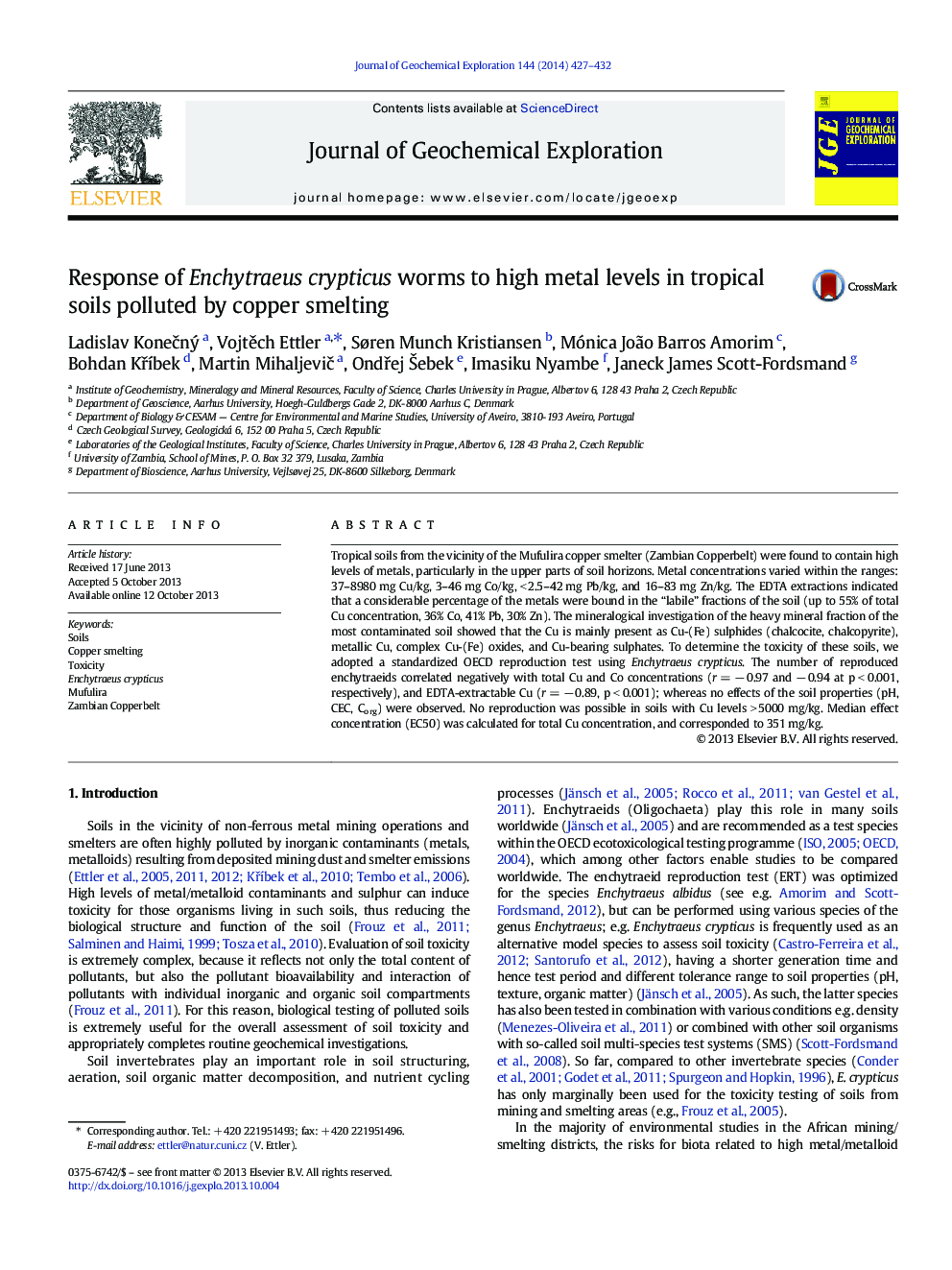| Article ID | Journal | Published Year | Pages | File Type |
|---|---|---|---|---|
| 4457291 | Journal of Geochemical Exploration | 2014 | 6 Pages |
•High levels of metals in soils near a copper smelter (Mufulira, Zambian Copperbelt)•No reproduction for Enchytraeus crypticus in soils with Cu levels > 5000 mg/kg•Cu reproduction effect concentration (EC50) was 351 mg/kg.
Tropical soils from the vicinity of the Mufulira copper smelter (Zambian Copperbelt) were found to contain high levels of metals, particularly in the upper parts of soil horizons. Metal concentrations varied within the ranges: 37–8980 mg Cu/kg, 3–46 mg Co/kg, < 2.5–42 mg Pb/kg, and 16–83 mg Zn/kg. The EDTA extractions indicated that a considerable percentage of the metals were bound in the “labile” fractions of the soil (up to 55% of total Cu concentration, 36% Co, 41% Pb, 30% Zn). The mineralogical investigation of the heavy mineral fraction of the most contaminated soil showed that the Cu is mainly present as Cu-(Fe) sulphides (chalcocite, chalcopyrite), metallic Cu, complex Cu-(Fe) oxides, and Cu-bearing sulphates. To determine the toxicity of these soils, we adopted a standardized OECD reproduction test using Enchytraeus crypticus. The number of reproduced enchytraeids correlated negatively with total Cu and Co concentrations (r = − 0.97 and − 0.94 at p < 0.001, respectively), and EDTA-extractable Cu (r = − 0.89, p < 0.001); whereas no effects of the soil properties (pH, CEC, Corg) were observed. No reproduction was possible in soils with Cu levels > 5000 mg/kg. Median effect concentration (EC50) was calculated for total Cu concentration, and corresponded to 351 mg/kg.
Graphical abstractFigure optionsDownload full-size imageDownload as PowerPoint slide
